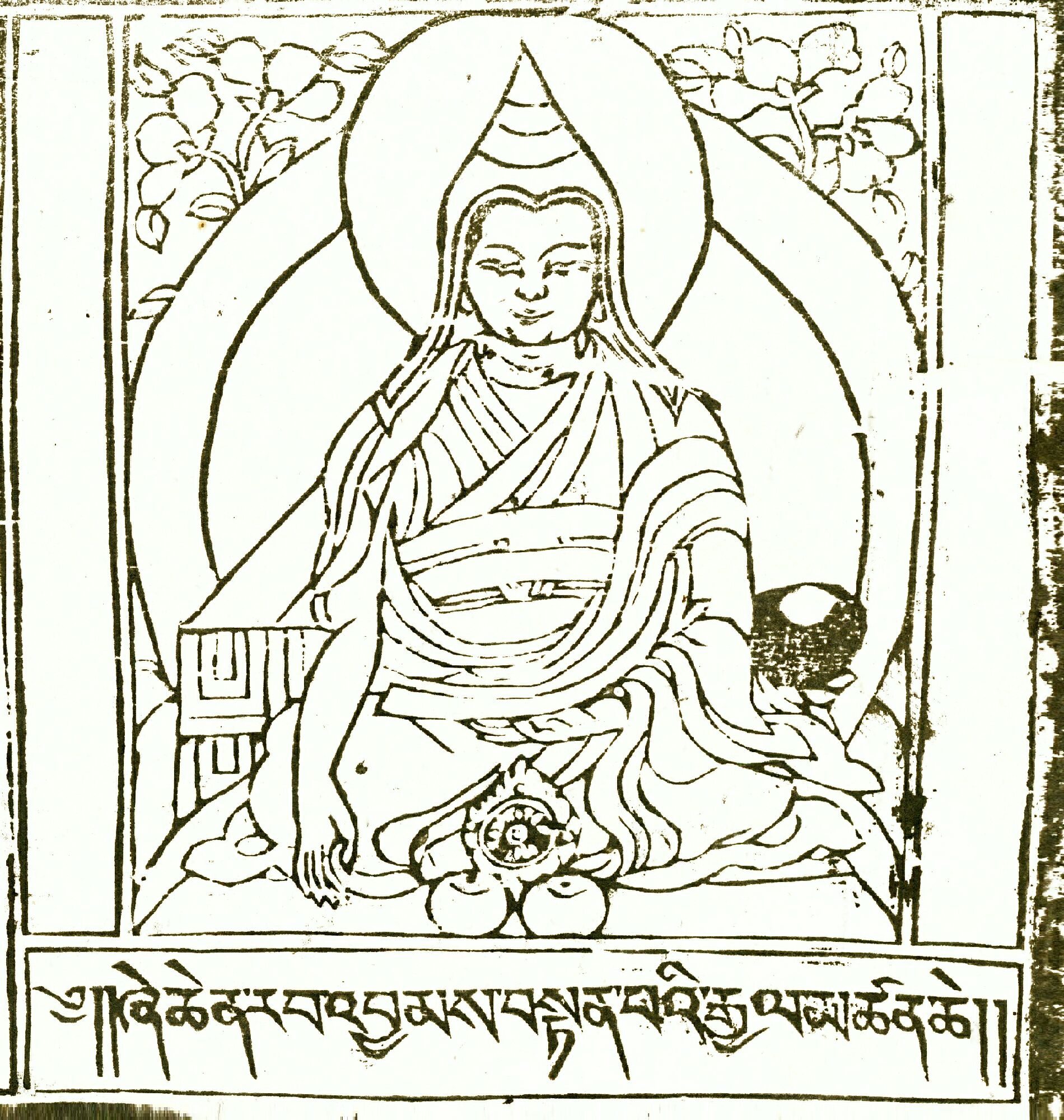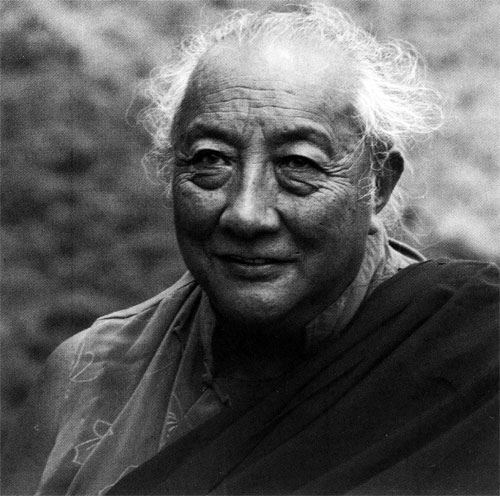Biography and autobiography in Tibet are important sources for both education and inspiration. Tibetans have kept such meticulous records of their teachers that thousands of names are known and discussed in a wide range of biographical material. All these names, all these lives—it can be a little overwhelming. The authors involved in the Treasury of Lives are currently mining the primary sources to provide English-language biographies of every known religious teacher from Tibet and the Himalaya, all of which are organized for easy searching and browsing. Every Tuesday on the Tricycle blog, we will highlight and reflect on important, interesting, eccentric, surprising and beautiful stories found within this rich literary tradition. The following biography summarizes the biographies of the 1st and 2nd Zhechen Rabjam Rinpoches by Samten Chhosphel on the Treasury of Lives.
Part 1: Padmasambhava
Part 2: Dampa Deshek
Part 3: Nyangrel
Part 4: The Jangter
Part 5: Dzogchen
Nyingma Founders, Part 6: Zhechen Monastery

Monasteries in Tibet were—and continue to be—institutions that developed over time. Most, it is fair to say, began when a master sat down somewhere to practice with a handful of disciples. A small hut is built, which is expanded into a permanent temple, and at some point formal observance of the monastic code is initiated. Sometimes the whole thing is picked up and relocated. The precise date of founding, then, is never entirely clear, and many Tibetan monasteries carry two or more start dates. Such is the case with Zhechen Monastery, Tennyi Dargye Ling, one of the six “mother” monasteries of the Nyingma tradition. Ask three different people and you’re likely to be given three different dates. For example, the 1st Zhechen Rabjam, Tenpai Gyeltsen (1650–1704), places the founding at 1690 or 1695, and the 2nd Zhechen Rabjam, Gyurme Kunzang Namgyel (1713–1769), places it far later, at 1735.
Tenpai Gyeltsen was born in central Tibet to a powerful family. At the age of 13, he ran away from home to study first at a Sakya monastery and then various Geluk institutions. He took novice ordination and earned a reputation for excellence in scholarship, acquiring the title of Rabjampa, indicative of immense learning. While in the service of a close aid of the 5th Dalai Lama (1617–1682), he attended teachings in Yerpa, north of Lhasa, by the 1st Dzogchen Drubwang, Pema Rigdzin (1625–1697), who became his lifelong guru. It wasn’t long before he mastered Dzogchen theory and practice, and was henceforth known as Dzogchen Rabjam. Not long afterwards, the 5th Dalai Lama, a major patron of Pema Rigdzin, commanded Tenpai Gyeltsen to accompany his guru to Kham to assist him in the establishment of Dzogchen Monastery, the founding of which is usually dated 1684.
At some point during the establishment of Dzogchen Monastery, Tenpai Gyeltsen moved a few kilometers west and initiated a community that eventually became Zhechen Monastery. According to one history, the year was 1690, and the community was named Zhechen Orgyen Chodzong. It consisted of an assembly hall and monks’ quarters, and its first abbot was named Pema Wangchuk, the “Laughing Lama.” According to another history, the institution was founded in 1795, and it was simply a small study center.
The exact characteristics of Zhechen Orgyen Chodzong are not really known, but it is unlikely that Tenpai Gyeltsen remained there long enough to develop much of an institution. We read in his biography that the King of Derge offered him the Karma Kagyu monastery of Trasho Pomdrak, where he spent a few years, leaving after the monks made plain their displeasure at being administered by a Nyingma lama. He then decided he would spend the rest of his life in retreat. But upon learning in 1697 that Pema Rigdzin had passed away, he returned to Dzogchen to help with the funeral, where he would remain until his own death in 1704.
Around the year 1717 the younger brother of the 2nd Dzogchen Drubwang, Gyurme Tekchok Tendzin (1699–1758), was identified as Tenpai Gyeltsen’s reincarnation. He was given the name Gyurme Kunzang Namgyel (1713–1769) and was brought to Zhechen Orgyen Chodzong. There was a community in need of a reincarnation of its founder.

Gyurme Tekchok Tendzin received teachings from a number of prominent masters, including his brother, the Dzogchen Drubwang; the 3rd throne-holder of Mindroling Monastery, Rinchen Namgyel (1694–1758); the 5th Dorje Drak Rigdzin, Kelzang Pema Wangchuk (1719/20–c.1770); and Drime Zhingkyong Gonpo (b.1724) of Katok Monastery. These represent four of the six Nyingma “mother” monasteries, which goes to show the close interconnection of these institutions.
Around 1734 or 1735, Gyurme Kunzang Namgyel, then just over 20 years old, either established a new institution on the far side of the valley or moved Orgyen Chodzong Drubde to a new spot and renamed it Tennyi Dargye Ling. This Zhechen Monastery then developed into a major site of Nyingma study and practice, said to have maintained a 160 branch monasteries across Tibet. A formal monastic college added in the early 20th century trained some of the greatest Nyingma lamas of recent times, including Dilgo Khyentse Rinpoche (1910–1991), who rebuilt Zhechen following its destruction by the Chinese, first in Nepal and then in its original (or second) location.
Thank you for subscribing to Tricycle! As a nonprofit, we depend on readers like you to keep Buddhist teachings and practices widely available.